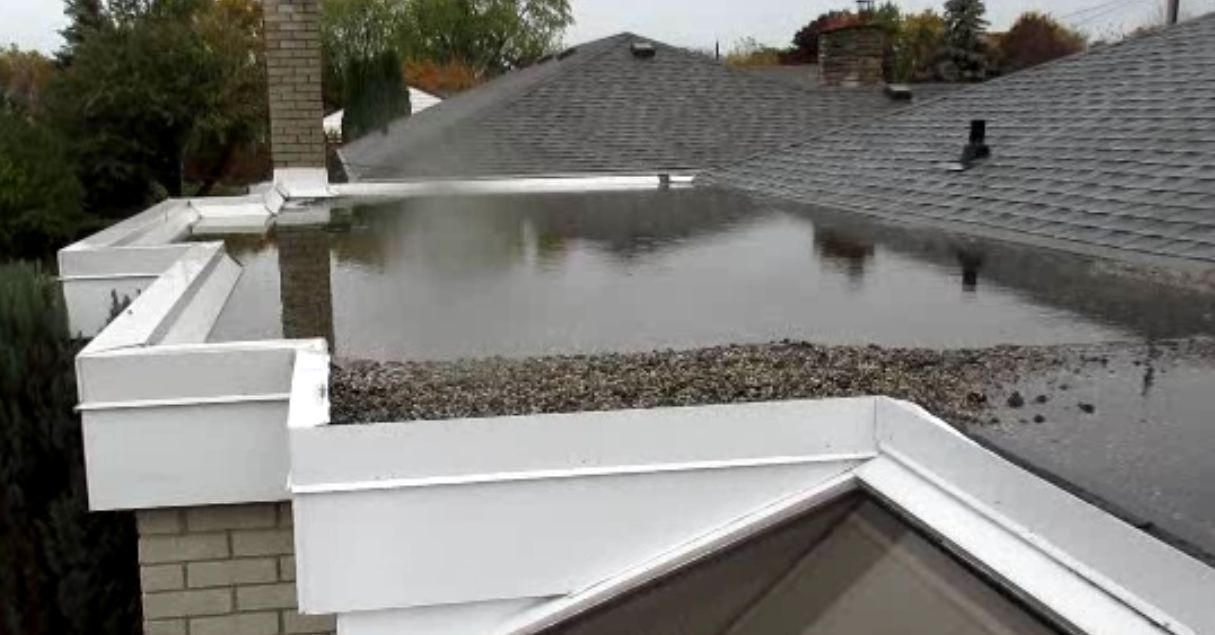
16 Feb Drainage Options for Your Flat Roof
Your flat roof comes with much less of a natural slope for the movement of water than a pitched format roof.
The design of a flat roof can create a challenge when site managers and architects are developing plans for their roofing project, as the last thing that you want as a property owner or homeowner, is for pools to gather on your roof. Stagnant pools of water can be dangerous to roof materials, and may even cause long-term water damage.
So, what are the options available to you for flat roof drainage?
- Install Scupper Drains
One of the most cost-effective flat roofing drainage systems available, scupper drains are installed in low points around the roof perimeter. Water drains through the opening at the base of the roof’s parapet, and flows through downspouts or gutters. Because scupper drains can sometimes be blocked by ice and debris, it’s important to clean your roof regularly.
- Use Internal Drains
Some architects design an entire roof around the location of internal drains. In this solution, sections of the roof will be made to slope in towards internal drains located throughout different points on your roof. Water will drain through spouts that run throughout your building into a drainage system below. Again, in these circumstances, care must be taken to ensure that internal drainage systems don’t clog.
- Eavestrough or Gutter Drains
Flat roof buildings that use Eavestrough or gutter drains need to slope slightly, to help water move towards the side of the property with the gutter. Since many commercial and industrial roofs have a parapet, the entire roof must be designed to slope in a single direction. If the roof is not too large, gutter drains can be a good option because they are less likely to clog than other solutions.
- Install a Pump
Installing a pump on the surface of your roof could help you to remove excess water from the structure. It’s possible to buy pump models today that automatically begin running when water starts to accumulate.
- EPDM Rubber Roofing
Finally, EPDM rubber roofing is a type of membrane installed over the existing roof structure. It effectively waterproofs the surface so that water is repelled towards the perimeter of the roof. This roofing solution is quick, easy to install, and can last much longer than other flat roof waterproofing solutions. Additionally, EPDM rubber also remains flexible and effective when the weather is very cold, which means that some solutions provide up to thirty years of protection.


Sorry, the comment form is closed at this time.